SELECT id, scientific_name, cultivar_name, common_name, description FROM plant WHERE 1 = 1 AND unusual IS NOT NULL ORDER BY scientific_name LIMIT 0, 20
Number of plants found: 20. Maximum shown per page: 20. Number of pages: 1.
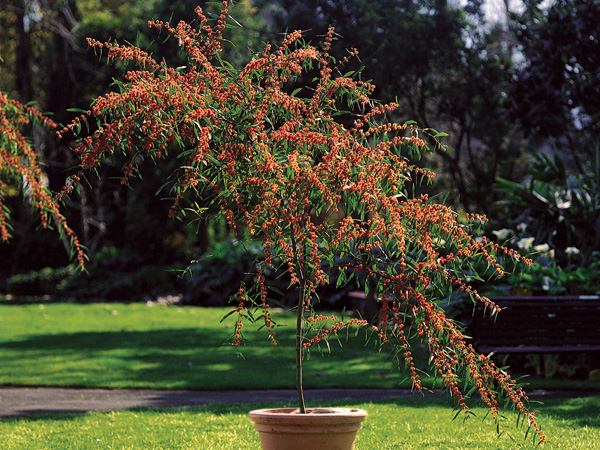 | 1. Cinnamon Wattle (Acacia leprosa) |
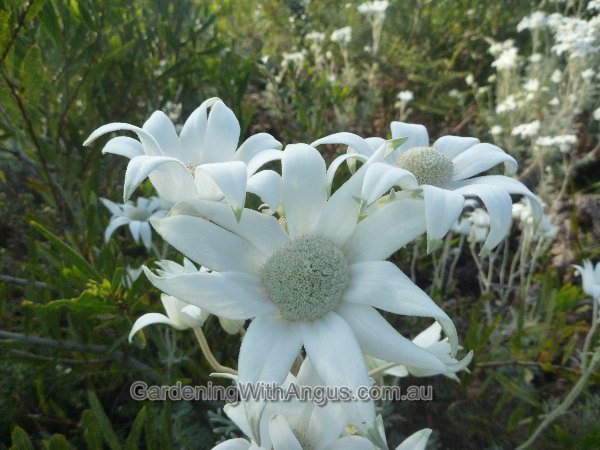 | 2. Flannel Flower (Actinotus helianthi)The shape and felt-like texture of the flowers and foliage make this one of our most iconic wildflowers. There are a number of wild forms of this species from compact bun-shaped plants to taller shrub-like habits. The flowers can be cut for indoor decoration and this... |
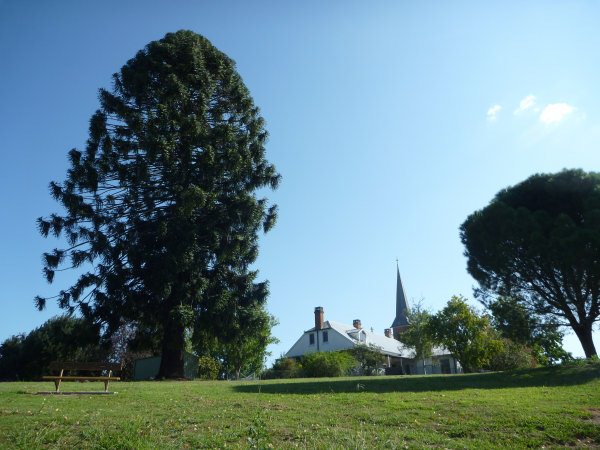 | 3. Bunya Pine (Araucaria bidwillii)A very large, stately specimen tree that is often seen in historical gardens as it was widely planted on large country estates. Its domed shape is its very distinctive feature but it should be stressed that this tree needs a lot of space and should... |
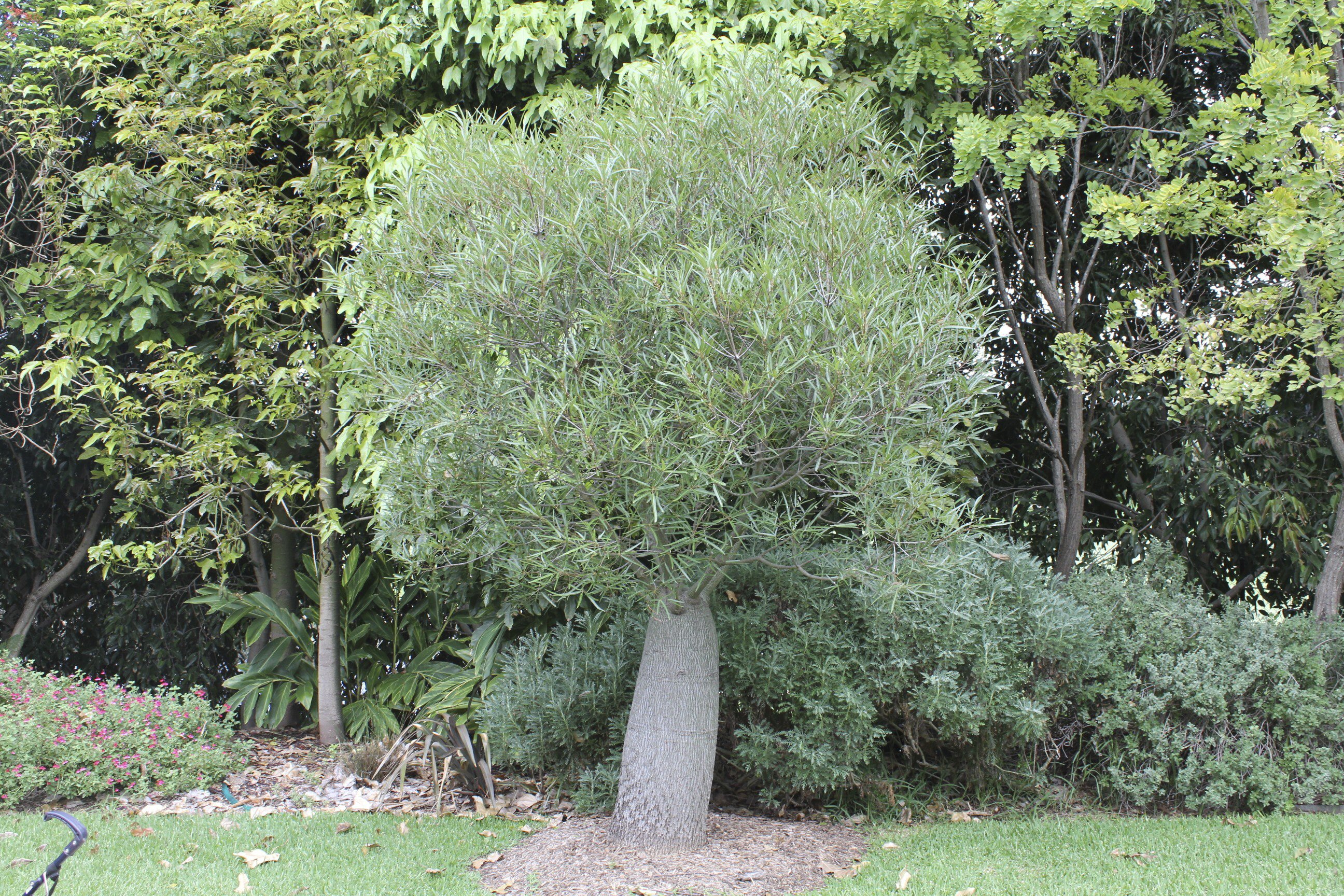 | 4. Queensland bottle tree, Queensland Kurrajong (Brachychiton rupestris) The Queensland bottle tree is a remarkable tree with its fabulous bottle shaped trunk. A large tree, growing to twenty metres tall, so it is best in large gardens, parks and farms where it can be seen at its best. Good for shade. It has... |
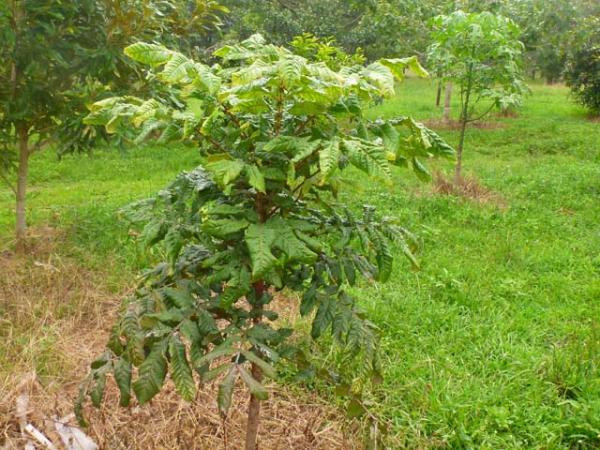 | 5. Davidson's plum, Ooray (Davidsonia pruriens)Davidson's plum is a small to medium sized rainforest tree from North Queensland. It bears edible, sour, dark burgundy fruit that grow in clusters along the stem. It has large compound leaves, and the new growth is red. The fruit can be made into jams and jellies,... |
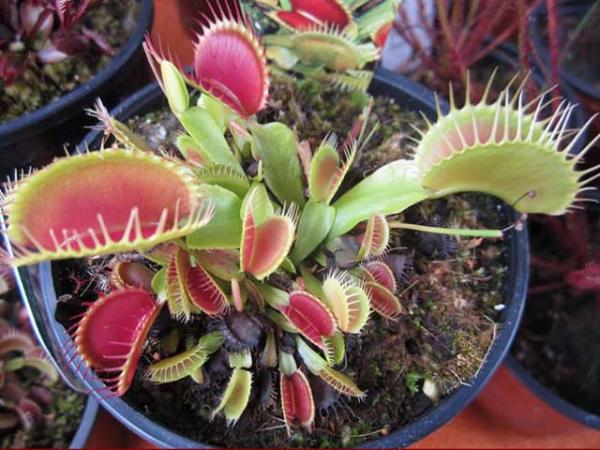 | 6. Venus flytrap (Dionaea muscipula)Dionaea muscipula, the Venus Flytrap, is a well known carnivorous plant. It is native to subtropical areas of America, and naturally grows in boggy areas of sandy or peaty soils which are naturally deficient in nitrogen and phosphorus. Trapping insect prey is a method that the... |
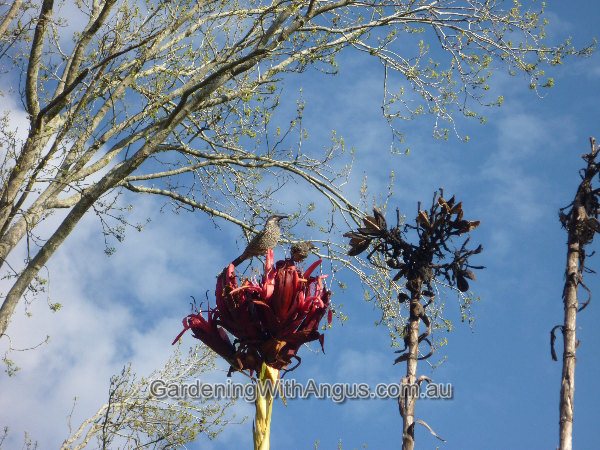 | 7. Gymea Lily (Doryanthes excelsa)The Gymea lily is a favourite with gardeners due to its unique flowerheads and tough upright, clumping growth habit. It makes a great feature or pot plant. It is very easy to maintain by simply cutting off the old flower heads and removing any dead... |
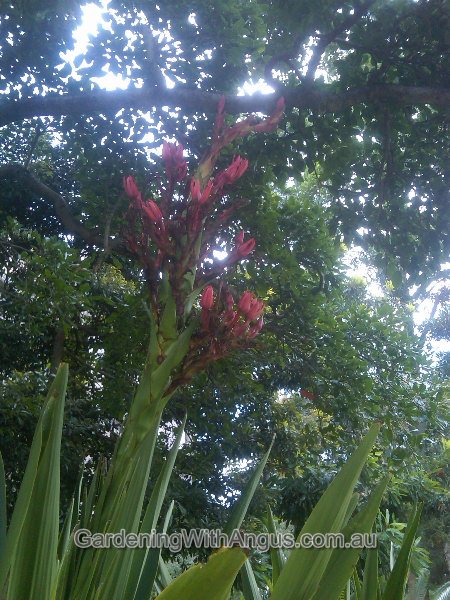 | 8. Spear lily (Doryanthes palmeri)The Spearlily is a favourite with gardeners due to its unique flowerheads and tough upright, clumping growth habit. It makes a great feature or pot plant. It is very easy to maintain by simply cutting off the old flower heads and removing any dead or... |
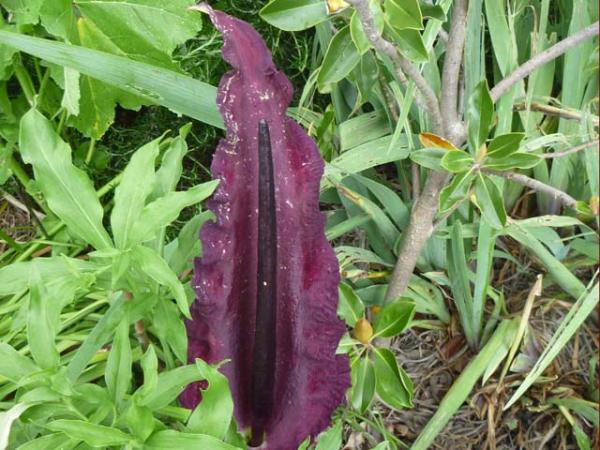 | 9. Voodoo lily, stink lily, black arum (Dracunculus vulgaris)Dracunculus vulgaris is a species of aroid, noted for its large, dark purple flowers that smell like a rotting carcass. It is native to the Balkans. The plant is attractive, with a speckled stem and palmate leaves. It prefers a moist, fertile soil, but should... |
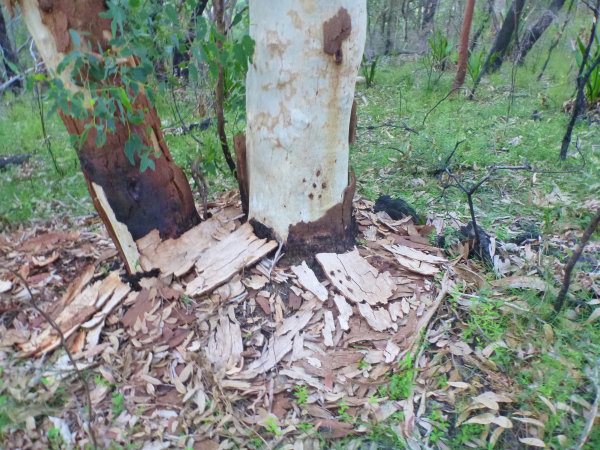 | 10. Scribbly Gum (Eucalyptus haemostoma) Eucalyptus haemostoma is the lovely scribbly gum, featured in the May Gibbs Bib and Bub childrens books. It has a beautiful white or grey trunk with its intriguing insect-caused scribbles. It has thin ribbons of shedding bark as well. It grows in a wonderfully contorted, spreading... |
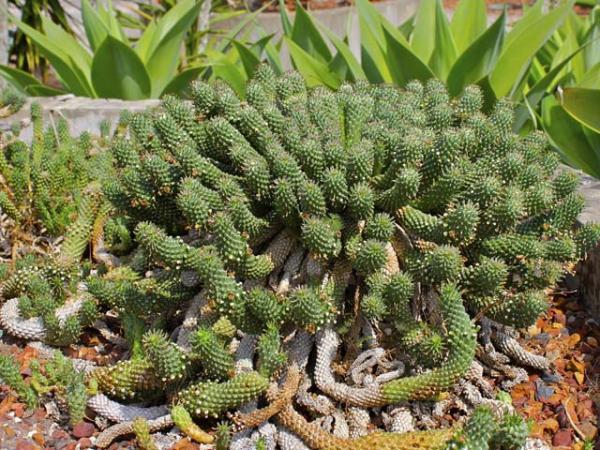 | 11. Medusa's head euphorbia (Euphorbia caput-medusae)Euphorbia caput-medusae is a curious looking succulen,t perennial plant with knobbly, snake-like stems arising from a central growing point. It will reach a metre across. It has clusters of fragrant flowers in winter and spring on the end of the stems. Grows well in a large container, and... |
.jpg) | 12. Yellow dragon fruit, Pitaya (Hylocereus megalanthus)Hylocereus megalanthus, the yellow dragon fruit, is an epiphytic, climbing, vine-like cactus. It produces delicious edible large fruit following large, showy white and yellow flowers. It flowers at night from summer to autumn, and the flowers are fragrant. The fruit is yellow skinned, very decorative and has creamy white flesh, containing small black... |
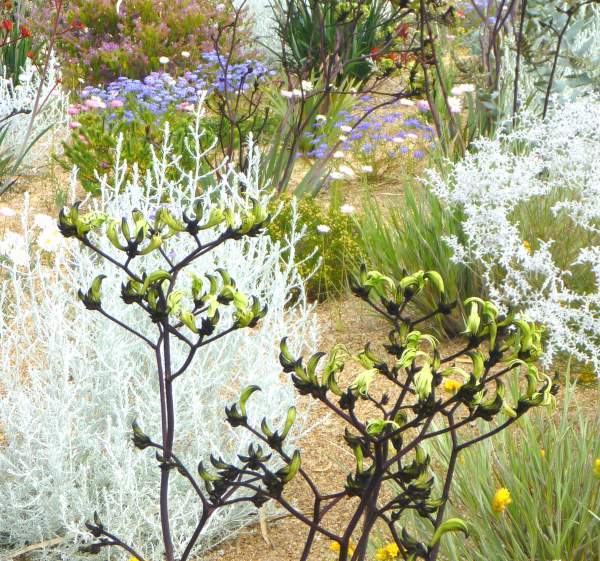 | 13. Black Kangaroo Paw (Macropidia fuliginosa) |
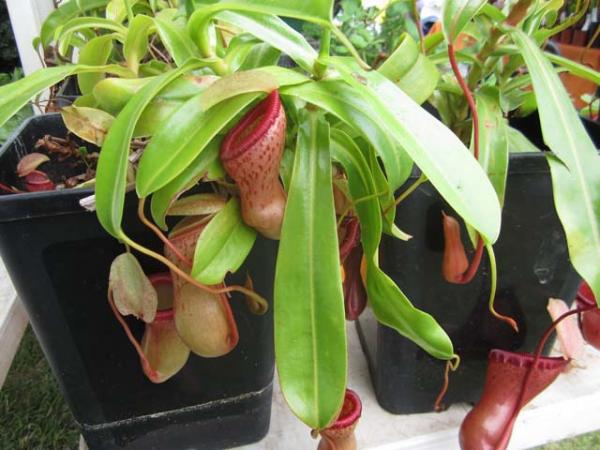 | 14. Pitcher plant (Nepenthes)Nepenthes are a tropical creeping or climbing carnivorous plants that form interesting insect catching pitchers on the end of mature leaves, in the right conditions. Nepenthes are highly ornamental, the leaves are a dull green, but the pitchers can be spectacular with varying forms and... |
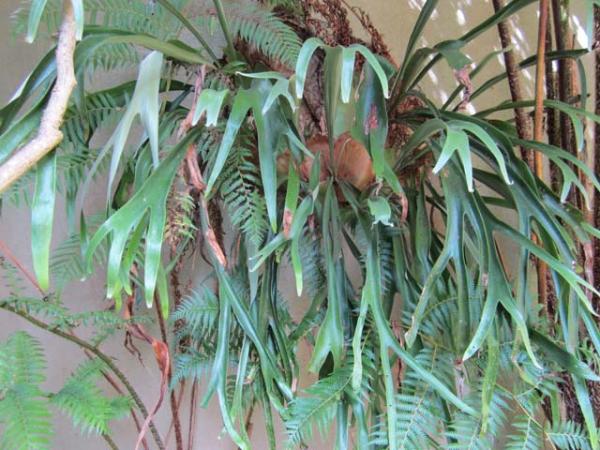 | 15. Elkhorn fern (Platycerium bifurcatum)The elkhorn fern, or Platycerium bifurcatum, is an epiphytic fern with a distinctive and decorative form of growth. The fern grows from a collection of plantlets, which attach to the host tree. Each of these smaller plants has a central nest frond, and this central... |
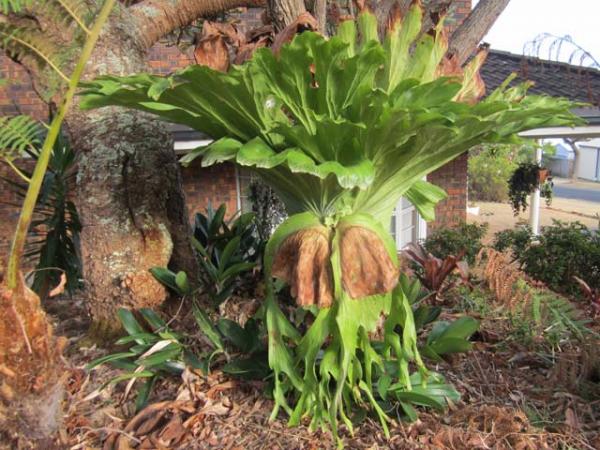 | 16. Staghorn fern (Platycerium superbum)The staghorn fern, or Platycerium superbum, is an epiphytic large fern that grows well in sub-tropical to tropical areas, and in sheltered spots in temperate areas. The fern is native to rainforest areas of northern NSW and Queensland, where it grows on trees or sometimes on... |
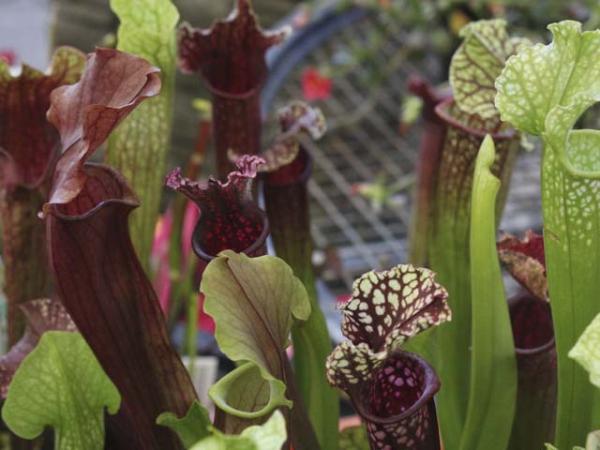 | 17. Pitcher plant (Sarracenea sp)Sarracenea, the pitcher plant, is a carnivorous species of plant. It is a herbaceous perennial with an underground rhizome and tubular shaped leaves. Sarracenea trap insects by luring them with nectar into the pitchers, where they encounter the slippery liquid. Unable to escape, they drown... |
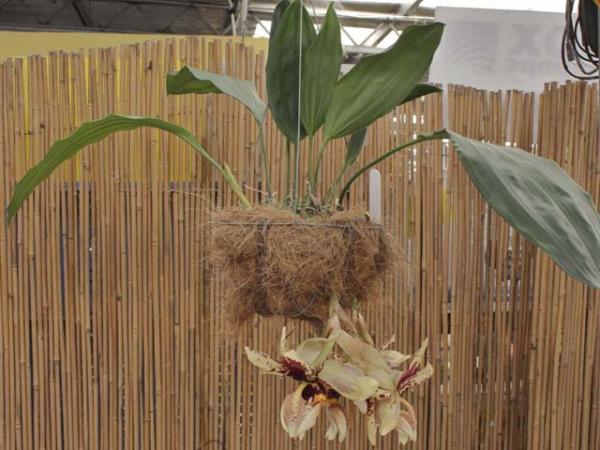 | 18. Upside down orchid (Stanhopea nigroviolacea)Stanhopea nigroviolacea, the Upside down orchid, is an epiphytic orchid, native to cooler areas of South America. It can be grown in temperate climates as well as subtropical and tropical. The flowers are strongly perfumed with a vanilla fragrance, and emerge from the base of... |
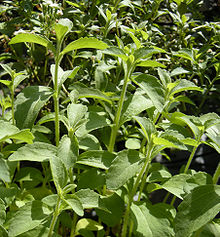 | 19. Stevia, sweetleaf (Stevia rebaudiana)Stevia is a perennial herb in warm climates, and an annual in colder areas. It is grown for the sweet tasting leaves that can be used as a sugar substitute. Stevia has zero calories and carbohydrates. Fresh leaves are sweet but with a slight earthy, liquorice aftertaste. This... |
.jpg) | 20. Miracle fruit (Synsepalum dulcificum)Miracle fruit is a slow growing, evergreen shrub. It grows to around 3 metres high in cultivation, and is of a bushy habit with glossy leaves. It bears small red berries that have a special characteristic. After eating a miracle fruit, sour tasting fruit will... |
Not what you are looking for? Perform another search.
